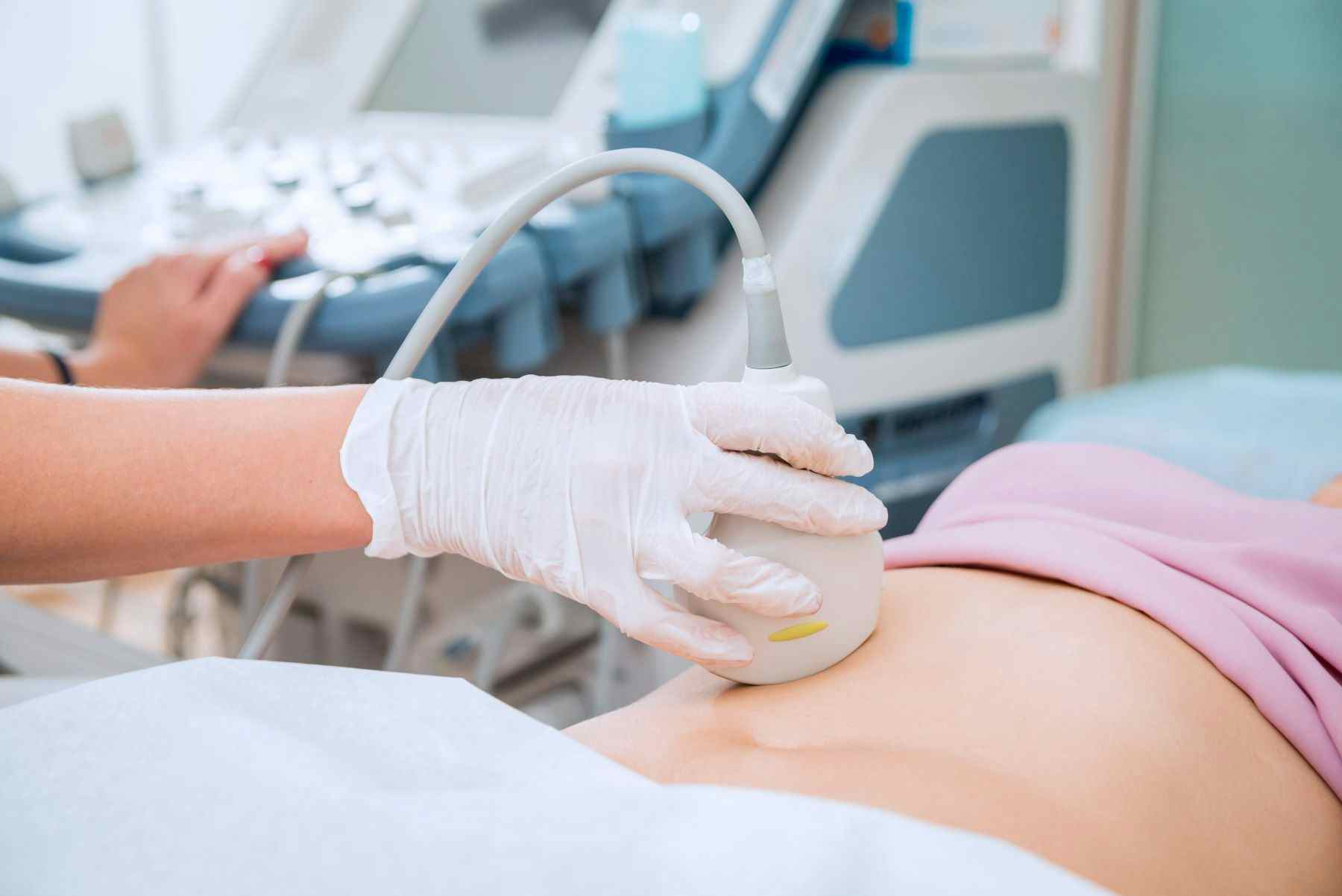Litigation Guides
Acute Appendicitis in Pregnancy
This guide will help you navigate the complexities of diagnosing Acute Appendicitis in pregnancy. From subtle symptoms to confounding factors, we explore the unique considerations for pregnant women, emphasizing the importance of advanced imaging techniques for accurate diagnosis, and the potential risks associated with delayed intervention. Delve into where pregnancy intersects with appendicitis, revealing a medical landscape where timely identification becomes paramount.
Medically Reviewed
What is Acute Appendicitis
Appendicitis is inflammation of the appendix, a small, finger-shaped pouch attached to the large intestine in the lower right abdomen. The most common cause of appendicitis is a blockage in the appendix, often from:1
- Appendicoliths: Hardened pieces of stool (imagine a tiny stone)
- Other obstructions: Food, parasites, or even tumors
- Sometimes, the exact cause remains unknown.
When the appendix is blocked, bacteria build up inside the blocked appendix, leading to:1
- Inflammation: The appendix becomes red, swollen, and painful.
- Perforation (rupture): If untreated, the appendix can burst, spilling bacteria into the abdomen and causing a serious infection called peritonitis (an infection of the abdominal lining).
- Abscess formation: Sometimes, the body walls off the infected appendix to create an abscess (a collection of pus).
Understanding Acute Appendicitis in Pregnant Women
Diagnosing acute appendicitis in women can be challenging because the typical classic signs may not always be present, common symptoms overlap with normal pregnancy (like nausea and vomiting), and the pregnant condition may mask the clinical picture.2

Identifying Symptoms of Appendicitis in Pregnancy
Common Symptoms of Appendicitis
The primary indicators of appendicitis are often similar across patients but can be obscured by pregnancy. Notably:2
- Abdominal pain: The pain starts around the belly button (periumbilical) and moves to the lower right side (right quadrant). It often worsens with movement, coughing, or pressure, especially as inflammation worsens.
- Loss of appetite: Patients feel no desire to eat (anorexia).
- Nausea and vomiting: Nausea and vomiting are common but are not always present.
- Fever: Fever is usually not high but might be present.
Less Common Symptoms
In addition to the primary symptoms, attorneys should note less common indicators that might complicate diagnosis:2
- Fatigue: feeling tired or lacking energy
- Heartburn: a burning sensation in the chest or throat
- Gas: feeling bloated or passing excessive gas (flatulence)
- Constipation or diarrhea: difficulty passing stool or loose stools
Diagnostic Signs in Medical Examination
The doctor's examination can elicit important signs that help identify appendicitis, particularly if inflammation of the lining of the abdomen (peritonitis) has developed:2 3
- Tenderness: When doctors push or palpate the abdomen, they look for pain in the lower right abdomen, especially McBurney's point (one-third the distance between the belly button and the hip bone).
- Muscle guarding: This refers to the tightening of abdominal muscles to protect from pain.
- Rebound tenderness: This means that pain increases when pressure is released after pressing on the abdomen.
Symptom Timeline and Risk Assessment
Appendicitis symptoms can vary, but often follow a specific timeline:1
- Early appendicitis (12-24 hours): This stage usually starts with mild, general discomfort around the belly button.
- Progression (over 24 hours): The pain typically worsens and becomes sharper, shifting to the lower right abdomen (McBurney's point). Other symptoms like nausea, vomiting, and fever may also appear.
- Perforation risk: Beyond 48 hours, the appendix is at increased risk of bursting (rupture).
Unique Considerations in Pregnancy
Compared to non-pregnant women, symptoms of pregnant women can be less clear, especially in the later stages of pregnancy. Important shifts during pregnancy include:4
- Appendix location: As the uterus grows, the appendix may move upward, causing pain in the right flank (side) or upper right quadrant.
- Tenderness: Pain may be less noticeable and less pronounced during examination of the abdomen due to the bulky uterus pushing the abdominal wall away from the inflamed appendix.
- Inflammation spread: The enlarged uterus may also block the omentum (tissue covering the abdominal organs) from reaching the inflamed appendix. Without the omentum's "wrapping" action, the inflammation from the appendix has a higher chance of spreading freely within the abdomen.
The Prevalence of Appendicitis in Pregnancy
Acute appendicitis is the most common non-obstetric surgical condition that occurs during pregnancy, with a rate ranging from 1 in 800 to one in 1,500 pregnancies.4,5
While the incidence of appendicitis is highest in the second trimester, ranging from 27% to 60% of cases, the risk is still significant in the first trimester, ranging from 19% to 36%.5 Even in the third trimester, the risk remains higher, ranging from 15% to 33%, with some studies reporting as high as 59%.
Pregnant women with appendicitis are at a greater risk of perforation (rupture) compared to non-pregnant individuals. Perforation rates can be as high as 55% in pregnant women, compared to 4% to 19% in the general population.5
Challenges in Diagnosing Appendicitis During Pregnancy
To find out if you have acute appendicitis, doctors mainly rely on your symptoms and your physical exam findings.3 However, diagnosis of appendicitis in pregnancy is challenging because its symptoms often overlap with the normal processes of pregnancy, making it harder to recognize.6
A recent study evaluated the effectiveness of different diagnostic methods in 42 pregnant women with suspected appendicitis who underwent surgery to remove their appendix.6 They compared pregnant women with a control group to see what helped doctors accurately diagnose appendicitis. After evaluating the data, the study authors found out the following:6
- Blood tests (laboratory parameters) could not distinguish pregnant women with appendicitis from pregnant women without appendicitis and thus cannot be relied on to make an accurate diagnosis.
- Imaging tests like ultrasound and MRI are more reliable, especially when combined with clinical examination.
- If blood tests and ultrasound are not clear, an MRI scan is the best way to diagnose appendicitis and avoid unnecessary surgery.
Early diagnosis is crucial to avoid risks for both mother and baby.6 So, doctors should use ultrasound or MRI before surgery to reduce unnecessary procedures and avoid harmful X-rays. CT scans should only be used as a last resort if other options aren't possible.
Navigating medical malpractice in appendicitis cases?
We help attorneys access the latest legal research, medical record reviews, physician consultations, and world-class experts.
Confounding Factors in Appendicitis Diagnosis During Pregnancy
Accurately diagnosing acute appendicitis during pregnancy can be difficult due to several factors:7
- Non-specific abdominal pain: Symptoms can mimic other pregnancy-related conditions.
- Elevated white blood cell count (leukocytosis): This is a common physiological change in pregnancy, making it less reliable for diagnosis of appendicitis.
- Anatomical shifts in the appendix: The growing uterus can displace the appendix, making it harder to locate.
- Overlapping symptoms between pregnancy and appendicitis: One example would be nausea and vomiting. The patient’s pregnant state might mask the clinical picture.
- Atypical symptoms: There is a higher likelihood of atypical symptoms during pregnancy.
Strength of Available Evidence
While the research indicates that the diagnosis of acute appendicitis in pregnancy is often difficult to diagnose, they all agree that:
- Right lower quadrant pain, increased white blood cells, fever, and positive radiological findings via ultrasound or MRI are strong indicators of appendicitis.
- Acute appendicitis is a surgical emergency.
Works Cited
1.
Jones MW, Lopez RA, Deppen JG. Appendicitis. nih.gov. Published April 24, 2023. https://www.ncbi.nlm.nih.gov/books/NBK493193/
2.
Aptilon Duque G, Mohney S. Appendicitis in Pregnancy. nih.gov. Published November 17, 2023. https://www.ncbi.nlm.nih.gov/books/NBK551642/
3.
Hirsch TM. Acute appendicitis. Journal of the American Academy of Physician Assistants. 2017;30(6):46-47. doi:https://doi.org/10.1097/01.jaa.0000516357.34621.aa
4.
Hirsch TM. Acute appendicitis. Journal of the American Academy of Physician Assistants. 2017;30(6):46-47. doi:https://doi.org/10.1097/01.jaa.0000516357.34621.aa
5.
Pastore PA, Loomis DM, Sauret J. Appendicitis in Pregnancy. The Journal of the American Board of Family Medicine. 2006;19(6):621-626. doi:https://doi.org/10.3122/jabfm.19.6.621
6.
Akın T, Birben B, Akkurt G, et al. Acute Appendicitis During Pregnancy: A Case Series of 42 Pregnant Women. Cureus. 2021;13(8). doi:https://doi.org/10.7759/cureus.17627
7.
Schwulst SJ, Son M. Diagnostic Imaging in Pregnant Patients With Suspected Appendicitis. JAMA. 2019;322(5):455. doi:https://doi.org/10.1001/jama.2019.9164
About the authors
Wendy Ketner, M.D.
Dr. Wendy Ketner is a distinguished medical professional with a comprehensive background in surgery and medical research. Currently serving as the Senior Vice President of Medical Affairs at the Expert Institute, she plays a pivotal role in overseeing the organization's most important client relationships. Dr. Ketner's extensive surgical training was completed at Mount Sinai Beth Israel, where she gained hands-on experience in various general surgery procedures, including hernia repairs, cholecystectomies, appendectomies, mastectomies for breast cancer, breast reconstruction, surgical oncology, vascular surgery, and colorectal surgery. She also provided care in the surgical intensive care unit.
Her research interests have focused on post-mastectomy reconstruction and the surgical treatment of gastric cancer, including co-authoring a textbook chapter on the subject. Additionally, she has contributed to research on the percutaneous delivery of stem cells following myocardial infarction.
Dr. Ketner's educational background includes a Bachelor's degree from Yale University in Latin American Studies and a Doctor of Medicine (M.D.) from SUNY Downstate College of Medicine. Moreover, she is a member of the Board of Advisors for Opollo Technologies, a fintech healthcare AI company, contributing her medical expertise to enhance healthcare technology solutions. Her role at Expert Institute involves leveraging her medical knowledge to provide insights into legal cases, underscoring her unique blend of medical and legal acumen.
Subscribe to our newsletter
Join our newsletter to stay up to date on legal news, insights and product updates from Expert Institute.
Speak with an Acute Appendicitis Expert
We're here to help you build a stronger case. Retain a leading expert witness today.
Access tailored expertise on every case
Trust your expert immediately
Speak with your expert before retaining
Need your medical records reviewed? Consult one of our 75+ on-staff physicians who can help evaluate the strengths and weaknesses of your case.




